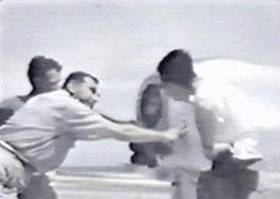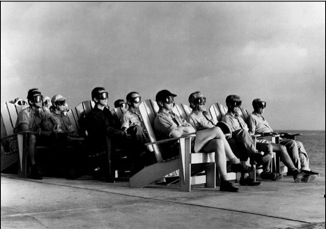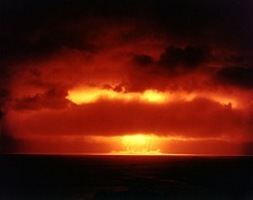“How queer everything is today! And yesterday things went on just as usual.” ― Lewis Carroll, Alice in Wonderland
OPERATION GREENHOUSE - 1951Operation Greenhouse was the fifth American nuclear test series, the second conducted in 1951 and the first to test principles that would lead to developing thermonuclear weapons. Conducted at the new Pacific Proving Ground, all of the devices were mounted in large steel towers, to simulate air bursts. This series of nuclear weapons tests were preceded by two land based tests at the Nevada Test Site, Operation Ranger and succeeded by Operation Buster-Jangle.
The "George" test validated the principles which would be used for the first
full-scale thermonuclear bomb test, Ivy Mike, one year later at Eniwetok Atoll for Operation IVY. Operation Greenhouse represented new and aggressive designs for nuclear weapons. The main idea was to reduce the size, weight, and most importantly, reduce the amount of fissile material necessary for nuclear weapons, while increasing the destructive power. With the Soviet Union's first nuclear test a year and half earlier, the United States had begun stockpiling the new designs before they were actually proven. Thus the success of Operation Greenhouse was vital before the development of thermonuclear weapons could continue. A number of target buildings, including bunkers, homes and factories were built on Mujinkarikku Islet to test nuclear weapon effects.
Joint Task Force 3 handled Greenouse, based out of Washington D.C. This test series consisted of four weapons related test shots from the 300-foot level on towers on the Enewetak Atoll Pacific Ocean, two of which greatly aided the pursuit of a hydrogen, or thermonuclear device. Carried out by the Atomic Energy Commission, the shots were:
Dog, April 7, 81 kilotons Easy, April 20, 47 kilotons George, May 8, 225 kilotons Item, May 24, 45.5 kilotons The George experiment proved an H-bomb was possible and led to a crash development program of the Teller-Ulam design. George was not a weapon, but only a device to test thermofusion capabilities of hydrogen isotopes. Item was the first test of the boosting principle, which involved increasing the yield of a weapon by as much as two times for the same amount of fissionable material. The "George" explosion was the world's first thermonuclear burn, though it was just a test design, unsuitable for weaponization. Shaped like a torus, the "George Device" had a small amount of heavy isotopes of liquid hydrogen (deuterium and tritium) placed at its center. The vast majority of its yield derived from fission. The energy output from the thermonuclear fusion in this test was insignificant in comparison. The "George" device was more like a "boosted" atomic bomb than a thermonuclear one. The small amount of heavy deuterium and tritium in this test fused, but its role was to generate a strong flurry of fast neutrons - ones that sparked more fissions in the uranium nuclei that were present, and which also caused fission in uranium-238 - which does not fission under bombardment with slow neutrons, as does uranium-235. |
CertificateDog Shot
Joint Task Force 3 |



